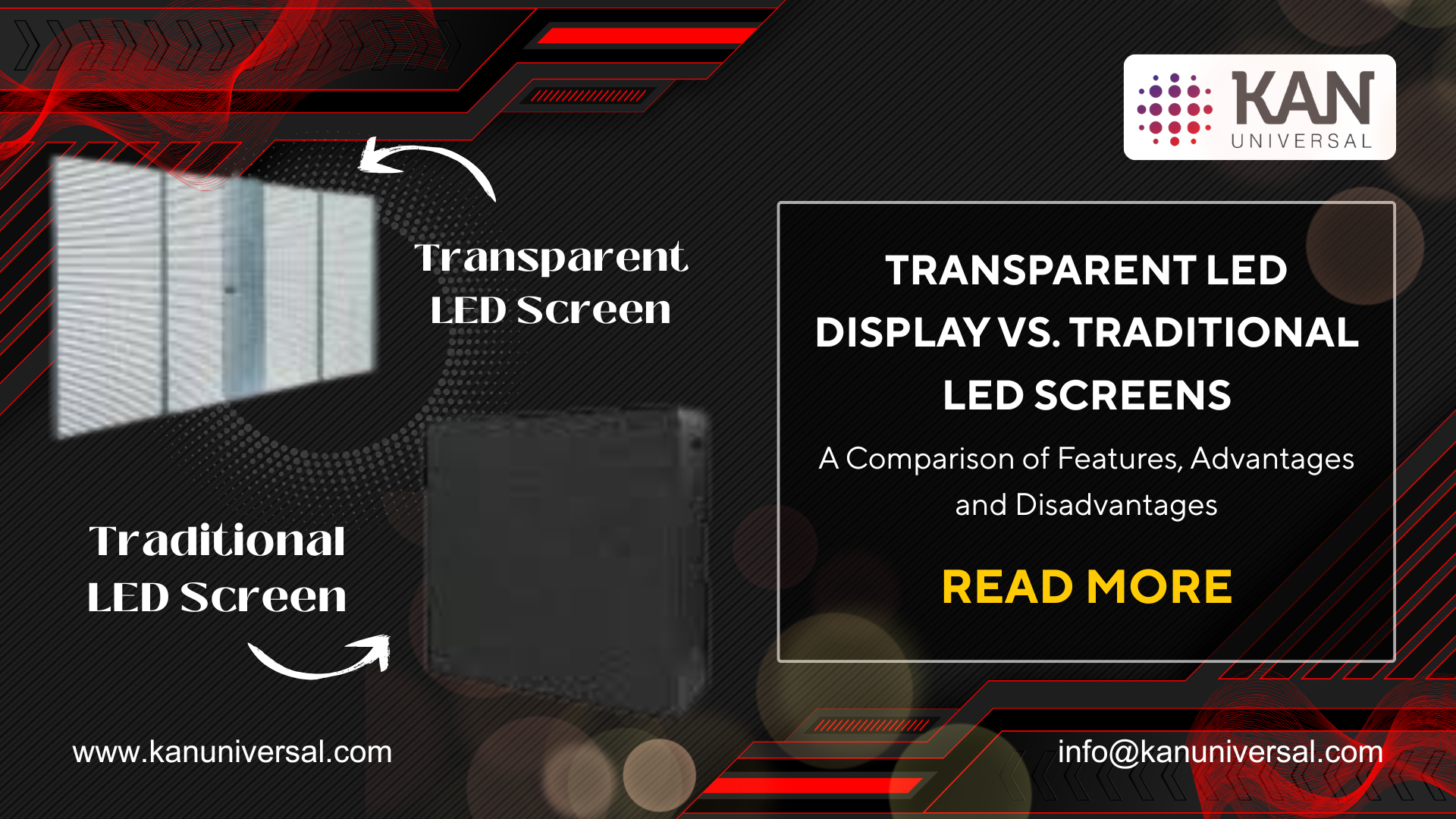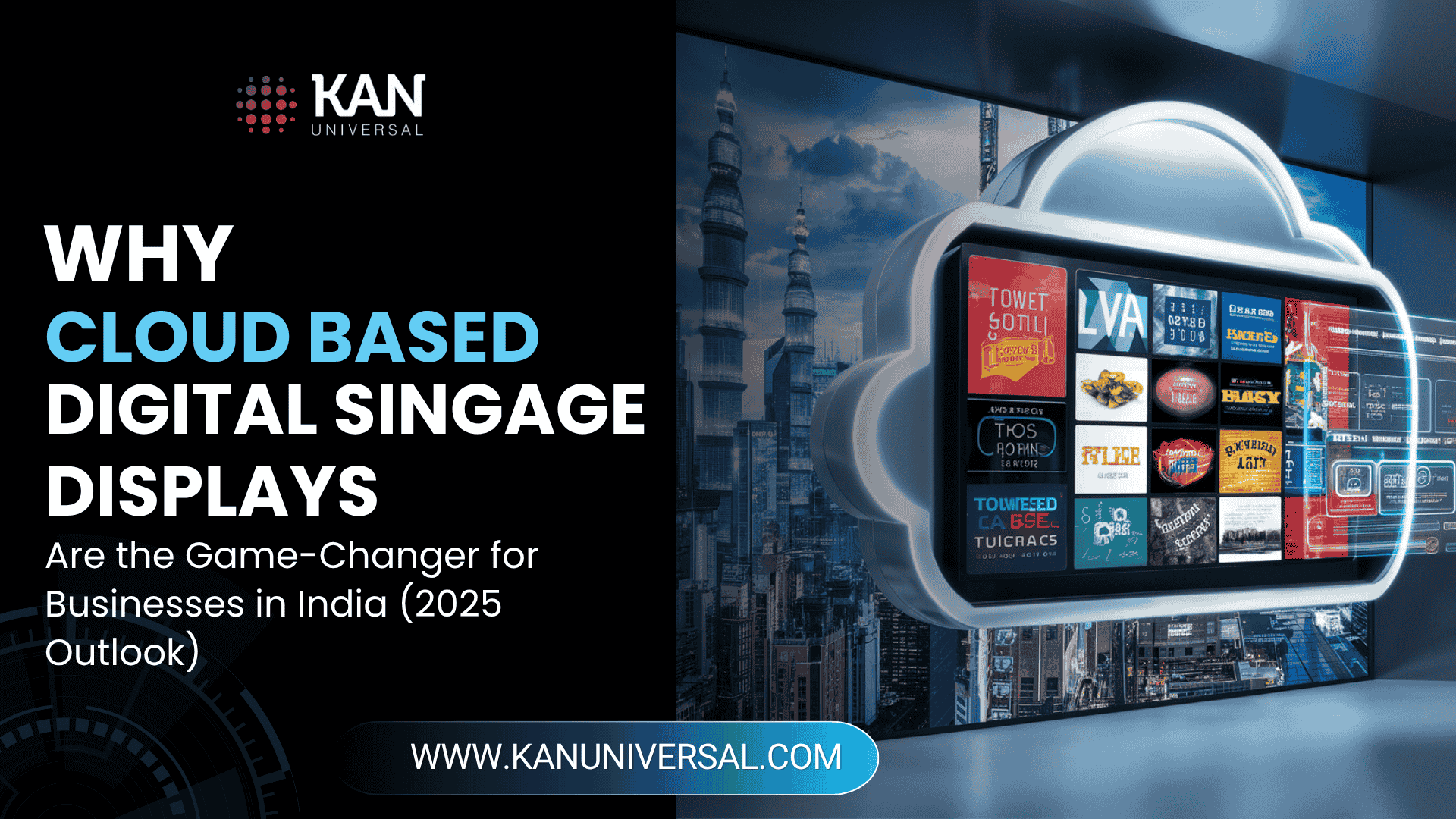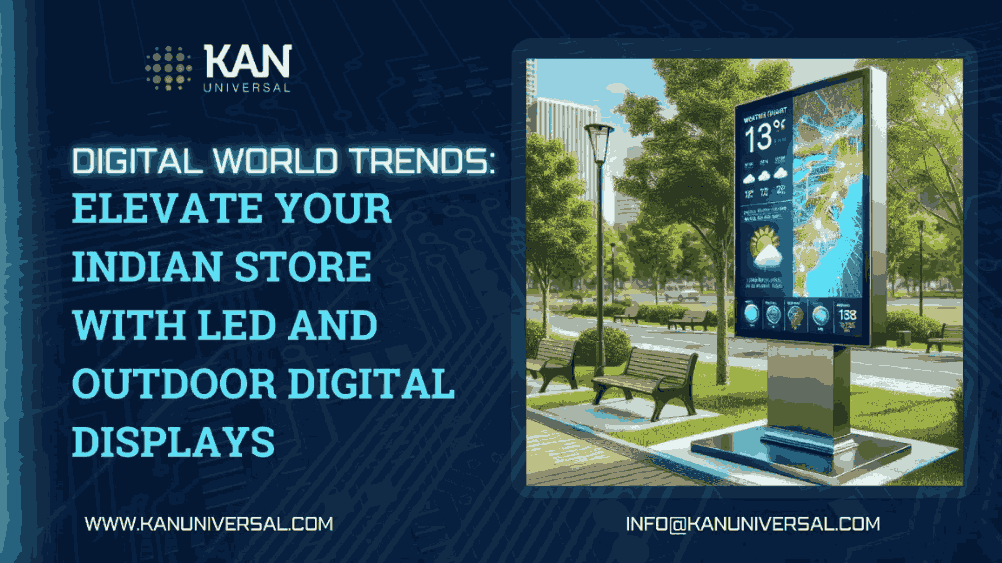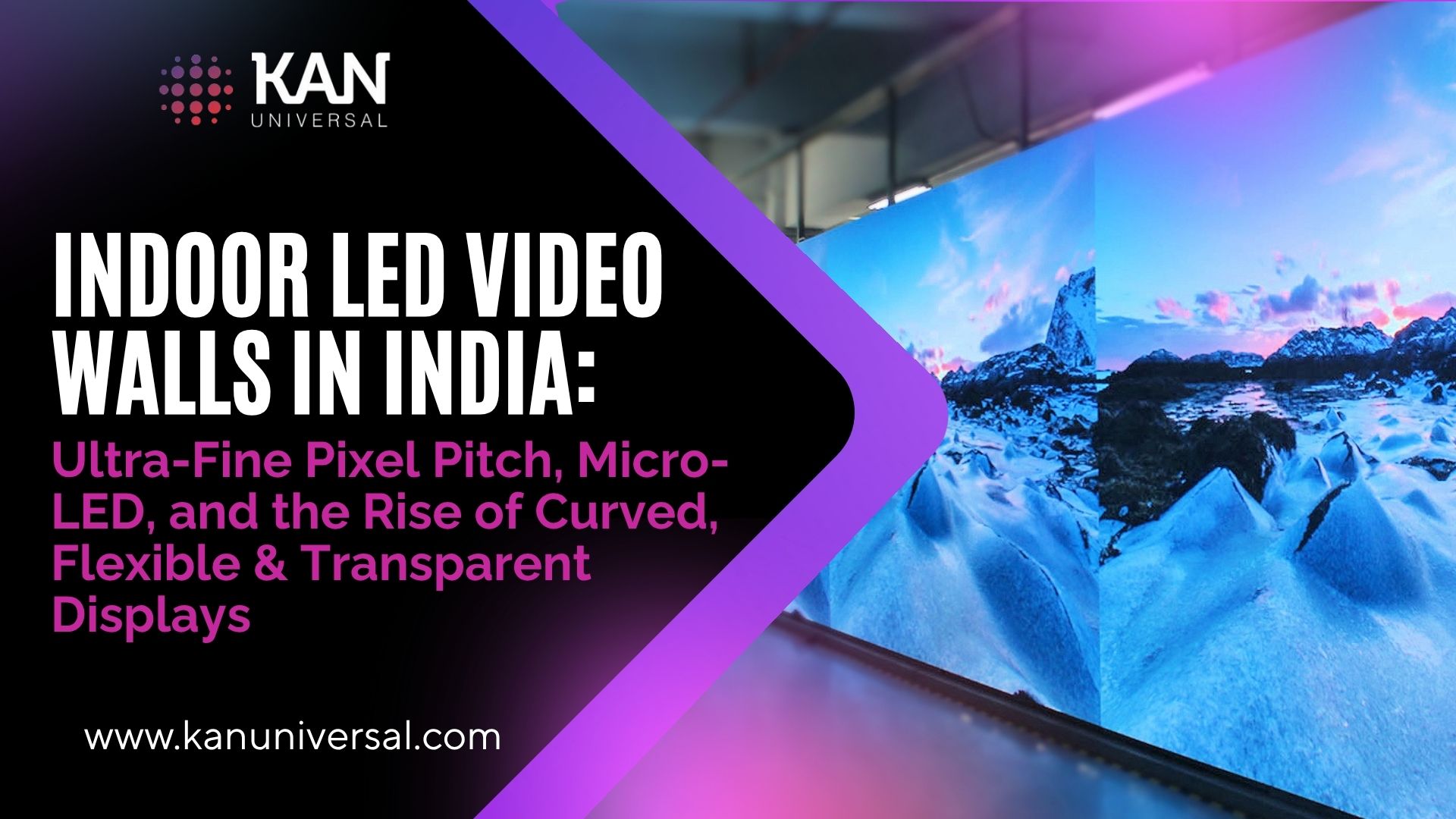Nowadays, digital technology is continuously evolving, and businesses and architects are getting a wider selection of choices to choose from. Two popular types that often come up in commercial and creative discussions are the transparent LED display screen and the traditional LED screen. While both Screens serve the core purpose of visual communication their structure, functionalities, and uses are significantly different.
In this blog, we’ll compare both technologies side-by-side to help you understand which is better suited for your needs, based on their features, benefits and limitations.
Table of Contents
What is a Transparent LED Display Screen?
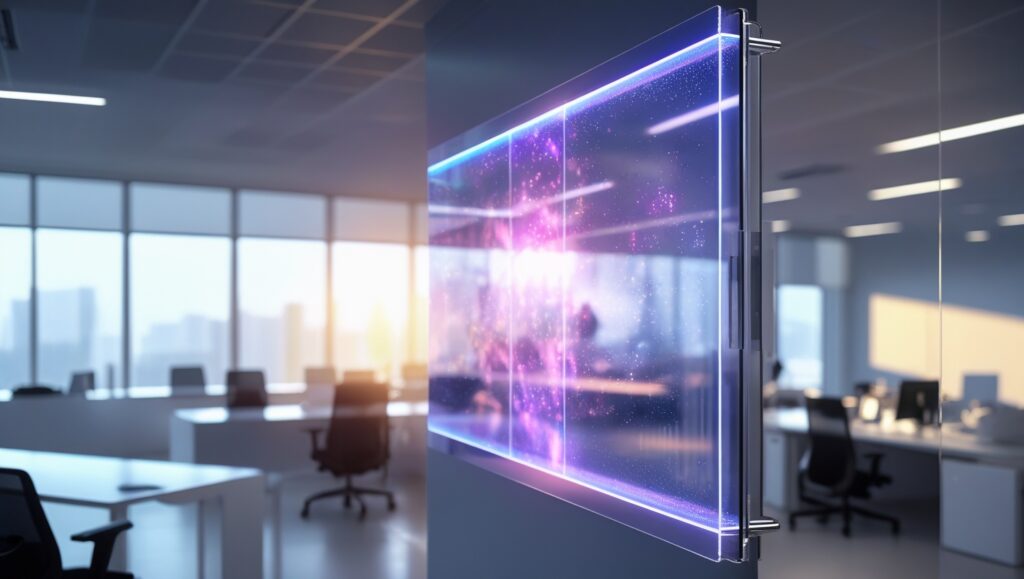
A see-through Transparent LED display screen is a new class of digital screen through which light is permitted to pass, resulting in a see-through appearance. It consists of a matrix of LED lights built into a see-through or partially transparent panel, enabling the observer to view behind the screen even when the content is being presented on the screen.
Transparent LED display are most often employed on glass-fronted structures, showrooms, and high-end point-of-purchase displays. Transparent LED displays are being touted for their architecturally pleasing appearance and for presenting high-impact images without blocking vision or light.
What is a Traditional LED Screen?

Traditional LED display are solid-surface screens that offer rich and vivid images with the assistance of light-emitting diodes. They are frequently used for purposes like outdoor billboards, indoor video walls, stadium signage, and others. These are known for its high-resolution pictures, durability, and the ability to respond well under varied lighting conditions.
Side-by-Side Comparison:
| Transparent LED Display Screen | Traditional LED Screen |
| 50%–90% transparent, allowing background visibility | Opaque completely blocks the background |
| High brightness, but often slightly lower than traditional | Very high brightness, suitable for direct sunlight |
| Lightweight due to mesh/grid structure | Heavier due to solid panel design |
| Easier to install on glass or modern architecture | Requires stronger structural support |
| Eye-catching due to its futuristic and integrated look | Strong, bold visuals, but visually bulky |
| Typically more energy-efficient | Moderate to high energy use |
| Modular and easy to maintain | Maintenance may require full-screen servicing |
Advantages of Transparent LED Screens
Aesthetic Value
A key benefit of using a transparent LED panel is its ability to merge effortlessly with glass structures. These screens complement modern architecture and design, maintaining openness while still displaying content.
Natural Light Retention
Unlike traditional screens, which block the light from flowing through, transparent LED screen displays allow natural daylight to flow through it which cuts down the need for artificial lighting during the day.
Creative Applications
These screens work well for immersive environments, holographic graphics, and futuristic stage design where the appeal is partially in seeing what is behind the content.
Energy Efficiency
Less LED material and lower brightness requirements in some applications mean LED screen transparent systems often use less power, reducing operational costs.
Disadvantages of Transparent LED Screens
Lower Contrast
In daylight conditions or at a distance, the image might not look as nice compared to regular LED screens.
Restricted Viewing Angles
The glass frame warps images if the viewer does it at some angle.
Cost
Depending on the technology and dimension, they may be pricier per square meter compared to standard LED displays.
Not Well Suited to Outdoor Harsh Conditions
Despite waterproof varieties being available, they are usually geared towards indoor, controlled environments or semi-automated outside surroundings.
Advantages of Conventional LED Screens
Improved Brightness and Contrast
Conventional LEDs offer excellent contrast and brightness, even in sunlight or bright areas.
Weather Resistance
Built with ruggedness in mind, these screens are ideal for outdoor billboards, sports stadiums, and roadside billboards.
Higher Resolution Options
With a tighter pixel pitch, traditional screens are better for close-up viewing and high-definition content display.
Wider Use Cases
From mobile vans to cinema-sized installations, traditional LED displays are versatile across a diverse array of applications
Disadvantages of Conventional LED Screens
Weighty & Heavy
Their established structure can give the device a ‘presence’, particularly in aesthetic conditions.
Translucent
Contained in obstruction and unsuitable for transparent surfaces or designs.
More Power Consumption
Primary brightness through all display-lit colours means more power will take place.
Choosing Between the Two
The choice between a transparent LED display screen and a traditional LED screen ultimately depends on your specific goals and environment.
Choose a Transparent LED Screen if:
You want to maintain visibility or natural light.
You’re installing on glass structures or within modern architecture.
The visual experience is as important as the content itself.
Choose Traditional LED Screen if:
You need maximum brightness and clarity in harsh environments.
The screen will serve as a focal visual element without the need for background visibility.
You’re displaying detailed content to a large or distant audience.
Emerging Trends
The future could be in hybrid technologies Transparent LED display that marry the power of conventional visuals with the versatility and design value of transparency. Advances in pixel pitch and modular design are bringing transparent LED screens within reach and use across more industries, while conventional LEDs continue to improve with improved brightness, energy efficiency, and flexibility.
Conclusion
While traditional LED screens and transparent LED screens have their benefits, they are different and serve specific needs. At Kan Universal, we fulfill all your needs and queries regarding LED screens. If you’re talking about high-impact advertising or communication at the stadium level. Choosing the right option will be a matter of balancing visibility, brightness, structure, and intention.
Contact Us and Connect With Our Team Today.

